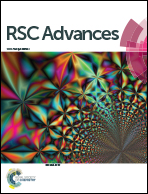Impact of hydrothermal pre-treatment on the anaerobic digestion of different solid–liquid ratio sludges and kinetic analysis
Abstract
This study is an assessment of hydrothermal pre-treatment (HTP) of different solid–liquid ratio (SLR) sewage sludge for enhancement of biogas production by anaerobic digestion. Anaerobic digestion efficacy was investigated by biochemical methane potential (BMP) tests and kinetic analyses. The results indicated that the solid–liquid ratio (SLR) of sludge could influence the COD solubilization and the concentration of volatile fatty acids (VFAs) after HTP. BMP tests revealed that HTP could improve the final methane yield. For the different solid–liquid ratios (5%, 8%, 10%, 12% and 15%) of sludge after HTP, the methane contents were found to be 64%, 66%, 62%, 61% and 60%, respectively. The optimum solid–liquid ratio was found to be 8%, and its cumulative biogas yield was 425.57 N ml g−1 VS. The modified Gompertz model and Logistic model were used for kinetic study of biogas production. Kinetic study results showed that the experimental data could be fitted with the two models and the modified Gompertz model was better fitted with the experimental data than the Logistic model. These findings proved that choosing an appropriate solid–liquid ratio for HTP could effectively improve the anaerobic digestion process of sewage sludge.



 Please wait while we load your content...
Please wait while we load your content...